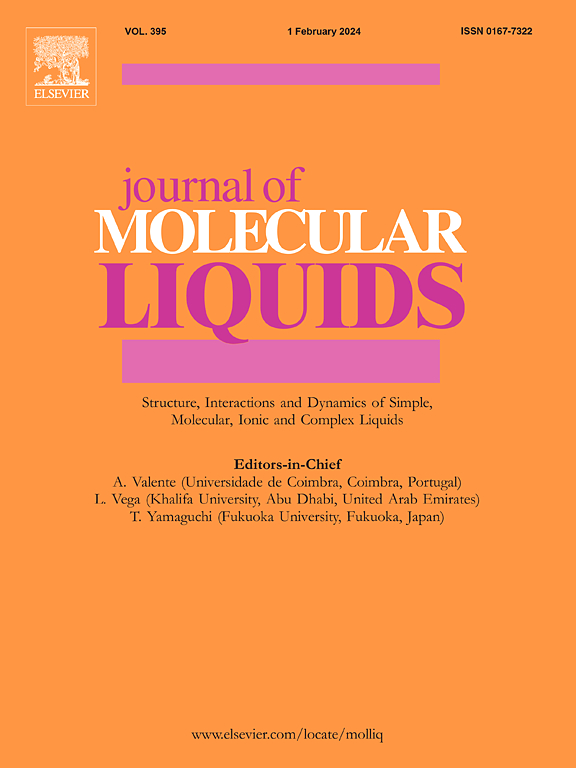A review on the radial distribution function: Insights into molecular structure, intermolecular interactions, and thermodynamic properties
IF 5.2
2区 化学
Q2 CHEMISTRY, PHYSICAL
引用次数: 0
Abstract
The radial distribution function (RDF), a fundamental statistical mechanic’s concept, characterizes the spatial arrangement of particles in a system. It describes the probability of finding a particle at a specific distance from a reference particle, providing important insights into the structure of liquids, ordered crystals, and disordered materials. RDFs are key tools for understanding molecular arrangements and are particularly valuable in studying the nature of fluids and fluid mixtures. This article reviews the RDF, focusing on its mathematical formulation, key features, and methods of determination, including X-ray and neutron scattering, integral equations, and molecular dynamics simulations. The relationship between RDFs and thermodynamic properties, including internal energy, chemical potential, and surface tension was elucidated. Also, RDFs contribute a key role in understanding intermolecular forces and hydrogen-bonded systems.
径向分布函数的研究进展:对分子结构、分子间相互作用和热力学性质的认识
径向分布函数(RDF)是统计力学的一个基本概念,表征了系统中粒子的空间排列。它描述了在与参考粒子的特定距离上找到粒子的概率,为了解液体、有序晶体和无序材料的结构提供了重要的见解。rdf是理解分子排列的关键工具,在研究流体和流体混合物的性质方面特别有价值。本文回顾了RDF,重点介绍了它的数学公式、主要特征和确定方法,包括x射线和中子散射、积分方程和分子动力学模拟。阐明了rdf与热力学性质(包括内能、化学势和表面张力)的关系。此外,rdf在理解分子间力和氢键系统方面也起着关键作用。
本文章由计算机程序翻译,如有差异,请以英文原文为准。
求助全文
约1分钟内获得全文
求助全文
来源期刊

Journal of Molecular Liquids
化学-物理:原子、分子和化学物理
CiteScore
10.30
自引率
16.70%
发文量
2597
审稿时长
78 days
期刊介绍:
The journal includes papers in the following areas:
– Simple organic liquids and mixtures
– Ionic liquids
– Surfactant solutions (including micelles and vesicles) and liquid interfaces
– Colloidal solutions and nanoparticles
– Thermotropic and lyotropic liquid crystals
– Ferrofluids
– Water, aqueous solutions and other hydrogen-bonded liquids
– Lubricants, polymer solutions and melts
– Molten metals and salts
– Phase transitions and critical phenomena in liquids and confined fluids
– Self assembly in complex liquids.– Biomolecules in solution
The emphasis is on the molecular (or microscopic) understanding of particular liquids or liquid systems, especially concerning structure, dynamics and intermolecular forces. The experimental techniques used may include:
– Conventional spectroscopy (mid-IR and far-IR, Raman, NMR, etc.)
– Non-linear optics and time resolved spectroscopy (psec, fsec, asec, ISRS, etc.)
– Light scattering (Rayleigh, Brillouin, PCS, etc.)
– Dielectric relaxation
– X-ray and neutron scattering and diffraction.
Experimental studies, computer simulations (MD or MC) and analytical theory will be considered for publication; papers just reporting experimental results that do not contribute to the understanding of the fundamentals of molecular and ionic liquids will not be accepted. Only papers of a non-routine nature and advancing the field will be considered for publication.
 求助内容:
求助内容: 应助结果提醒方式:
应助结果提醒方式:


